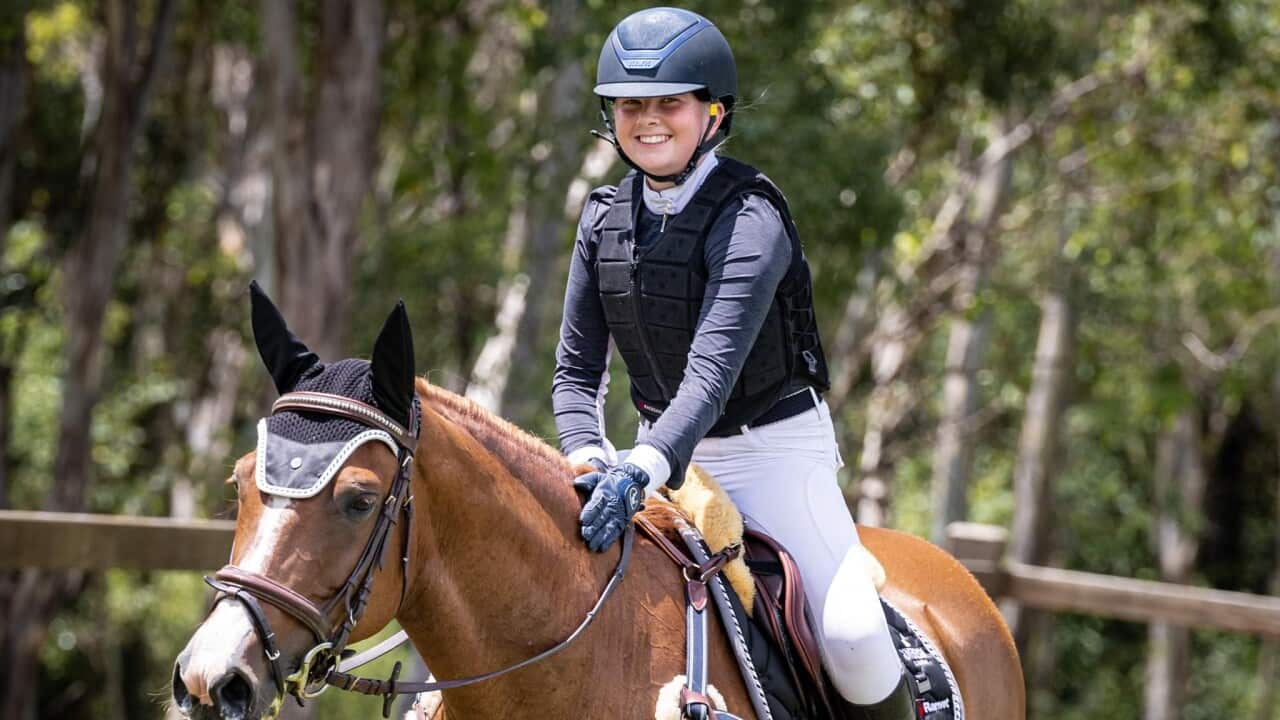“And it was crushing to not be able to do that.”

Chronic pain in Sienna’s neck, back, and legs has shattered her dream of competing in equestrian sports at the Olympics. Source: Supplied / Melissa Goodson / Sienna Zwar
Sienna’s journey began at the age of seven when her grandparents gifted her riding lessons. What started as a hobby soon turned into a passion.
A portrait of a horse hangs in the living room, and a rocking horse sits in the corner.

Sienna’s painting captures her emotions surrounding losing her dream of competitive riding. Source: Supplied / Sienna Zwar
But the most striking piece is a painting Sienna created in her final year of high school, which her friends described as “too sad”.
Sienna still rides for fun and enjoys time with her horse Atlas, who is agisted on a nearby property.

Sienna continues to ride for enjoyment and cherishes her time with her horse, Atlas, who is agisted at a nearby property. Source: SBS News / Mahnaz Angury
Impact of chronic pain on children
“A recent research article looked at teacher perceptions of children with chronic pain. Around 20 per cent of those teachers didn’t believe the child was in chronic pain and thought it was more to do with not wanting to be at school or not wanting to engage in education,” Ellis says.
Chronic Pain Australia says under-resourcing in this space can have serious consequences and is calling for tailored programs in the health system and schools to better support children suffering from chronic pain.

Professor Manuela Ferreira says it’s important to determine the best ways to care for those suffering from chronic pain through additional research. Source: Supplied / Bill Green/Manuela Ferreira
Professor Manuela Ferreira is a musculoskeletal health researcher and the head of the Musculoskeletal Program at George Institute for Global Health. She’s echoed these concerns.
Sienna says for far too long, her pain was put down to ‘growing pain’, leading to years of unnecessary suffering.

Sienna says her pain was often dismissed as “growing pains”, causing her years of unnecessary suffering. Source: SBS News / Mahnaz Angury
“People don’t believe you ever. Especially women, young women. They tend to think you’re being dramatic,” Sienna says.
“I don’t want anyone to have to go through what I went through. I don’t think it was fair. Children with chronic pain need to be believed.”
